How Hard is it to Learn Mandarin Chinese? Here’s an Honest Answer

Chinese has developed quite the reputation for being one of, if not the hardest language in the world to learn for English speakers.
This isn’t entirely unjustified- at first glance, the characters can seem mind-boggling and the tonal speech entirely unfamiliar.
⚠️ Not to mention, the US government ranks Mandarin Chinese as a “super-hard language” for native English speakers to learn.
But it’s not all doom and gloom!
In fact, in terms of grammar, sentence structure and vocabulary, Mandarin is extremely straightforward.
There are a lot of misconceptions surrounding Mandarin, including that you have to be ‘super smart’ to learn it. But ultimately, like any language, it just takes time and persistance.
So, here are 9 reasons why learning Mandarin Chinese isn’t as hard as you think!
How Hard is it to Learn Mandarin? || Pinyin
How Hard is it to Learn Mandarin? || Similar Sentence Structure
How Hard is it to Learn Mandarin? || No Verb Conjugation
How Hard is it to Learn Mandarin? || Nouns Never Change
How Hard is it to Learn Mandarin? || Systematic Characters
How Hard is it to Learn Mandarin? || Word Formation
How Hard is it to Learn Mandarin? || Language Learning Curve
How Hard is it to Learn Mandarin? || Loan Words
How Hard is it to Learn Mandarin? || Fun-Filled Community
How Hard is it to Learn Mandarin? || FAQs
How Hard is it to Learn Mandarin? || Pinyin
A lot of students want to learn Mandarin so they can chat with their Chinese friends, watch Chinese movies, discuss work with colleagues or even just get through daily tasks like ordering a sandwich at Subway.
What’s one thing these tasks all have in common?
They all rely on speaking and listening.
Chinese characters are a significant reason that the language is considered so difficult. To simply read a newspaper it’s estimated you’ll need 2,000-3,000 characters.
With so many characters to learn, not to mention radicals and stroke order, many students end up pouring hours and hours into learning to read and write.

Whilst these skills are certainly important, there is a shortcut.
Introducing: pinyin.
👉 Pinyin, or 拼音 (pīn yīn) is a system that uses the Roman alphabet to represent the sounds of Mandarin Chinese, aiding pronunciation and language learning for non-native speakers.
For example, the pinyin for the characters 你好 (hello) is: nǐ hǎo.
You might notice it’s not the exact same as English characters, the squiggly lines above the i and a show the tones of the word.
However, once you’ve learned the tones (there’s only 4!) you’ll be able to learn Mandarin at top speed using only English letters.
Nowadays, Chinese children all learn this system in school when they begin learning characters, so if you need to write down a word in China, you could probably get away with writing down the pinyin version.
Most textbooks (certainly at the beginner level) incorporate pinyin and graded readers now offer both character and pinyin options, meaning your study material options are pretty vast.
For students who want to focus purely on spoken Chinese, pinyin offers a fantastic shortcut.
How Hard is it to Learn Mandarin? || Similar Sentence Structure
When learning a new language, you might not only have to learn new words and pronunciation, you may also have to totally overwrite the way you build sentences in your mind.
English uses the SVO structure (subject-verb-object), which you can see in this sentence:
He (subject) eats (verb) bread (object).
However, learners of languages like Japanese and Korean will have to adapt to a whole new sentence structure that uses SOV (subject-object-verb). For example:
彼はパンを食べます
Kare wa pan o tabemasu
Or, in grammatical terms:
彼は (he; subject) パンを (bread; object) 食べます (eats; verb)
Bit of a tough one to get your head around right?
Luckily, you don’t need to worry about sentence structure in Chinese at all!
Just like English, Chinese follows a SVO pattern.

Let’s take a look at some examples:
他吃面包 Tā chī miànbāo
他 (he; subject) 吃 (eats; verb) 面包 (bread; object)
我买一本书 Wǒ mǎi yī běn shū
我 (I; subject) 买 (buy; verb) 一本书 (a book; object)
妈妈去公园 Māmā qù gōngyuán
妈妈 (Mom; subject) 去 (goes to; verb) 公园 (the park; object)
This means that when you’re learning Mandarin Chinese, you’ll have one less thing to juggle in your mind!

Countries That Speak Chinese // + The Best Place to Study
Chinese is the language with the most native speakers in the world with over 1.3 billion native speakers. Check out all the countries that speak Chinese!
How Hard is it to Learn Mandarin? || No Verb Conjugation
“European languages are so much easier than Chinese!”
We’ve heard this time and time again and in counter-argument we just have two words: verb conjugation.
In Spanish, there’s 16 ways to conjugate a verb and in French there’s a whopping 21 verb tenses to wrap your head around.
And in Chinese? There is no verb conjugation.
For example:
I eat 我吃 wǒ chī
She eats 她吃 tā chī
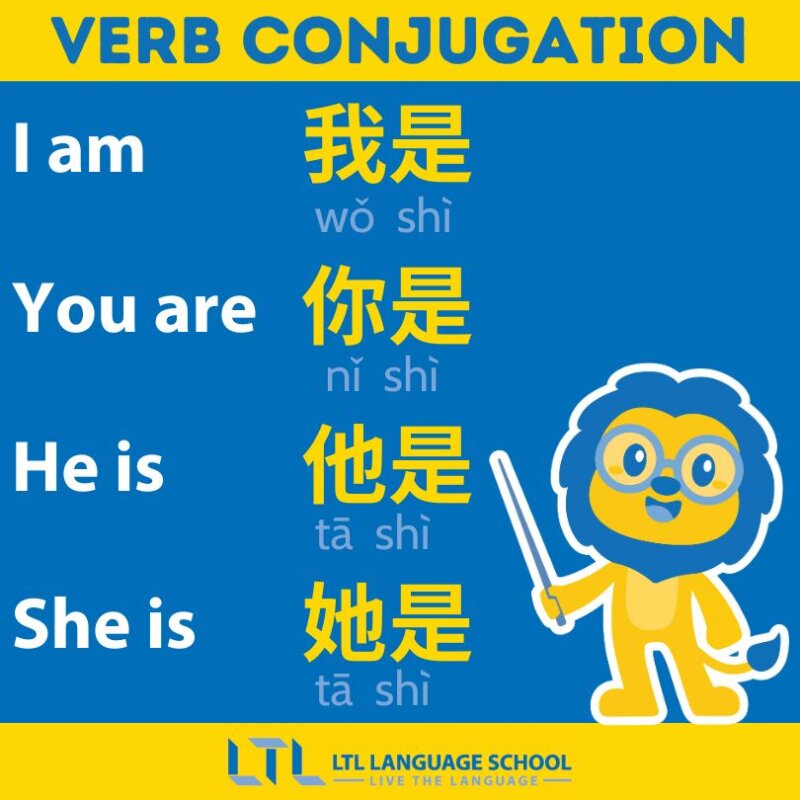
You speak 你说 nǐ shuō
He speaks 他说 tā shuō
Even for the verb ‘to be’, you simply would use 是
I am 我是 wǒ shì
You are 你是 nǐ shì
She is 她是 tā shì
👉 This means you only have to learn a verb once before you can start applying it in lots of sentences with changing subjects.
There are some ways of talking about the past and future, however this includes the addition of extra words and the verb itself does not change, for example:
I eat 我吃 wǒ chī
I will eat 我会吃 wǒ huì chī
I ate 我吃了 wǒ chī le
I have eaten 我吃过 wǒ chī guò

Is Chinese (Really) Becoming The Language of the Future?
Language is a wonderful thing. It opens new doors to friends, cultures and food. But what really is the language of the future? We reveal all.
How Hard is it to Learn Mandarin? || Nouns Never Change
Masculine and feminine? Singular and plural? In Chinese, you won’t have to deal with any of these.
Welcome to the world of noun simplicity!
In Mandarin, nouns aren’t altered with the gender or number.
For example, in German, a male friend is Freund and a female friend is Freundin.
In Chinese, a male friend is 朋友 (péngyǒu) and a female friend is also 朋友 (péngyǒu).
In English, the singular for man’s best friend is dog and the plural is dogs, in Chinese, ‘dog’ is 狗 and ‘dogs’ is also 狗.
You will have to learn measure words, which are similar to ‘a slice of bread’ or ‘a cup of coffee’ in English, but are much more extensive in Mandarin.
However, the nouns themselves remain the same.
So, no matter how many of something you have, the noun won’t change.



How Hard is it to Learn Mandarin? || Systematic Characters
Chinese characters can seem very intimidating.
For one thing, there’s a whole lot more than the 26 letters that comprise the English alphabet. There’s actually over 100,000 characters.
However, most native Chinese speakers no nowhere near this number and most high school leavers can recognize about 4,500 characters.
The important thing to know about characters is that they’re not just a bunch of squiggly lines on a page: they’re actually very systematically constructed using a series of radicals.
👉 Radicals are element used as building blocks to create more complex characters and are often found in the character’s left, right, or top positions.
Radicals provide clues about the character’s meaning or pronunciation.

For example, the radical 氵represents water and can be found in characters such as:
河 hé (n. river)
海, hǎi (n. sea)
流 liú (v. to flow).
Understanding radicals can assist in deciphering characters and learning their meanings.
Many characters include a phonetic radical, meaning that even though you may not have seen a character before, you may be able to hazard a guess to its pronunciation based on the radicals used to make up the word.
For instance, the radical 青 qīng appears on the right side of each of the following characters and indicates the pronunciation:
情 qíng (n. feeling)
清 qīng (adj. clear)
请 qǐng (v. to request)
Once you have learned the basic radicals and their meanings and pronunciation, you’ll really be able to make leaps and bounds in your Mandarin progress.
How Hard is it to Learn Mandarin? || Word Formation
So now that you know that characters are written in a very systematic way, it may be no surprise to learn that words are also formed using similar building-block logic.
Here’s 6 examples of Chinese words made up of two or more characters that make total sense:
Telephone
电话 (diànhuà)
电 (diàn) – electricity
话 (huà) – speech, talk
Restaurant
餐厅 (cāntīng)
餐 (cān) – meal
厅 (tīng) – hall
Bicycle
自行车 (zìxíngchē)
自 (zì) – self
行 (xíng) – move, go
车 (chē) – vehicle
Train
火车 (huǒchē)
火 (huǒ) – fire
车 (chē) – vehicle
Breakfast
早餐 (zǎocān) – “breakfast”
早 (zǎo) – morning
餐 (cān) – meal
Breakfast
大学 (dàxué) – “university”
大 (dà) – big
学 (xué) – learn
These are just a few examples, and the Chinese language has many more compound words formed by combining characters to convey specific meanings.

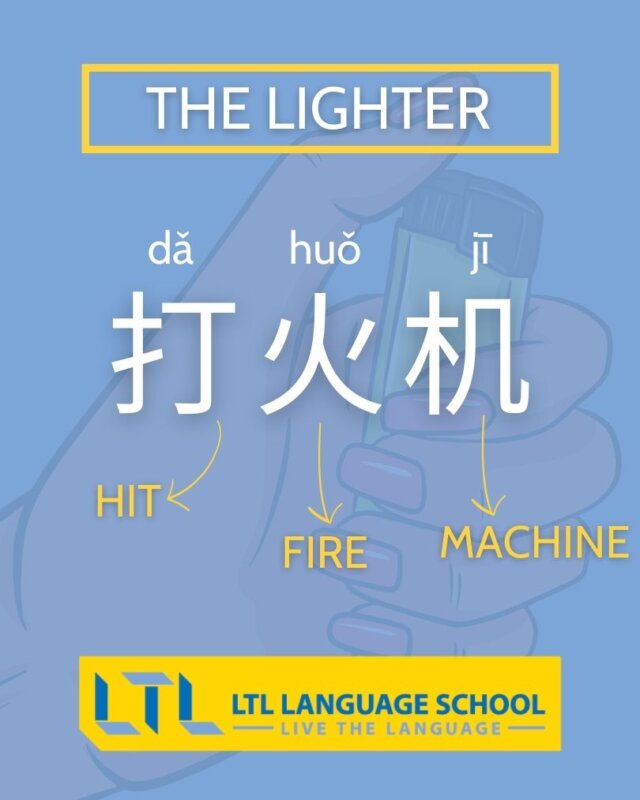
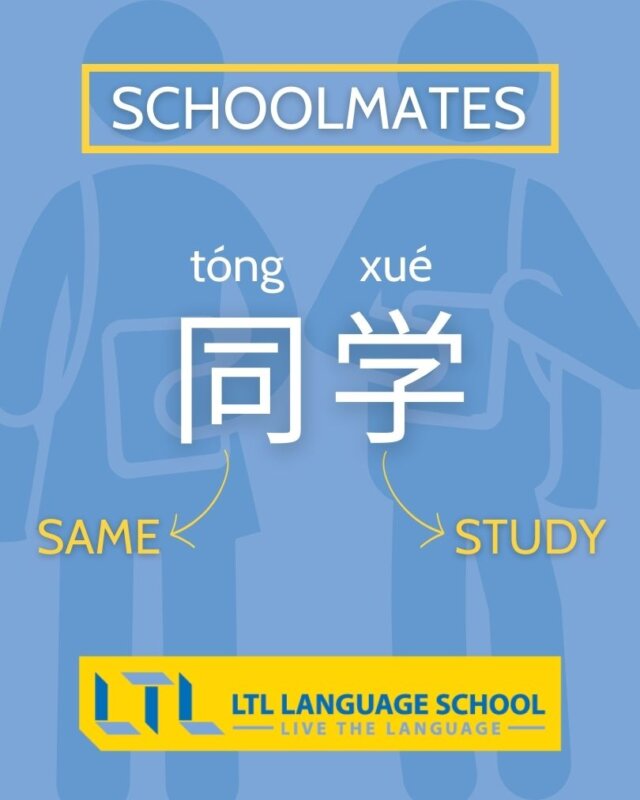
The more you learn, the easier it is to learn, as you’ll have all of these memorized components you just slot together.
Which leads us on to our next point…
How Hard is it to Learn Mandarin? || Language Learning Curve
The language learning curve refers to how easy a language is to learn over time.
Essentially, this refers to how with some languages are easier in the beginning and harder in the later stages and vice versa.
Let’s take a look at how this compares between Chinese and Japanese in terms of grammar and pronunciation.
First up, here’s how pronunciation compares:

With Chinese, pronunciation poses a huge initial challenge. There’s the difficult distinction between similar sounds such as x/sh and j/zh, and of course, the tones.
In Chinese, if you have poor pronunciation and poor grasp of the tones, it’s possible to absolutely butcher a three syllable sentence.
However, you’ll notice after the initial challenge, Chinese gets far easier. Essentially, once you’ve got it, you’ve got it.
This is the opposite in Japanese, where the initial pronunciation poses no real challenge for English speakers, however grasping native sounding intonation at the advanced level is notoriously difficult.
Now, let’s take a look at the learning curve for grammar:
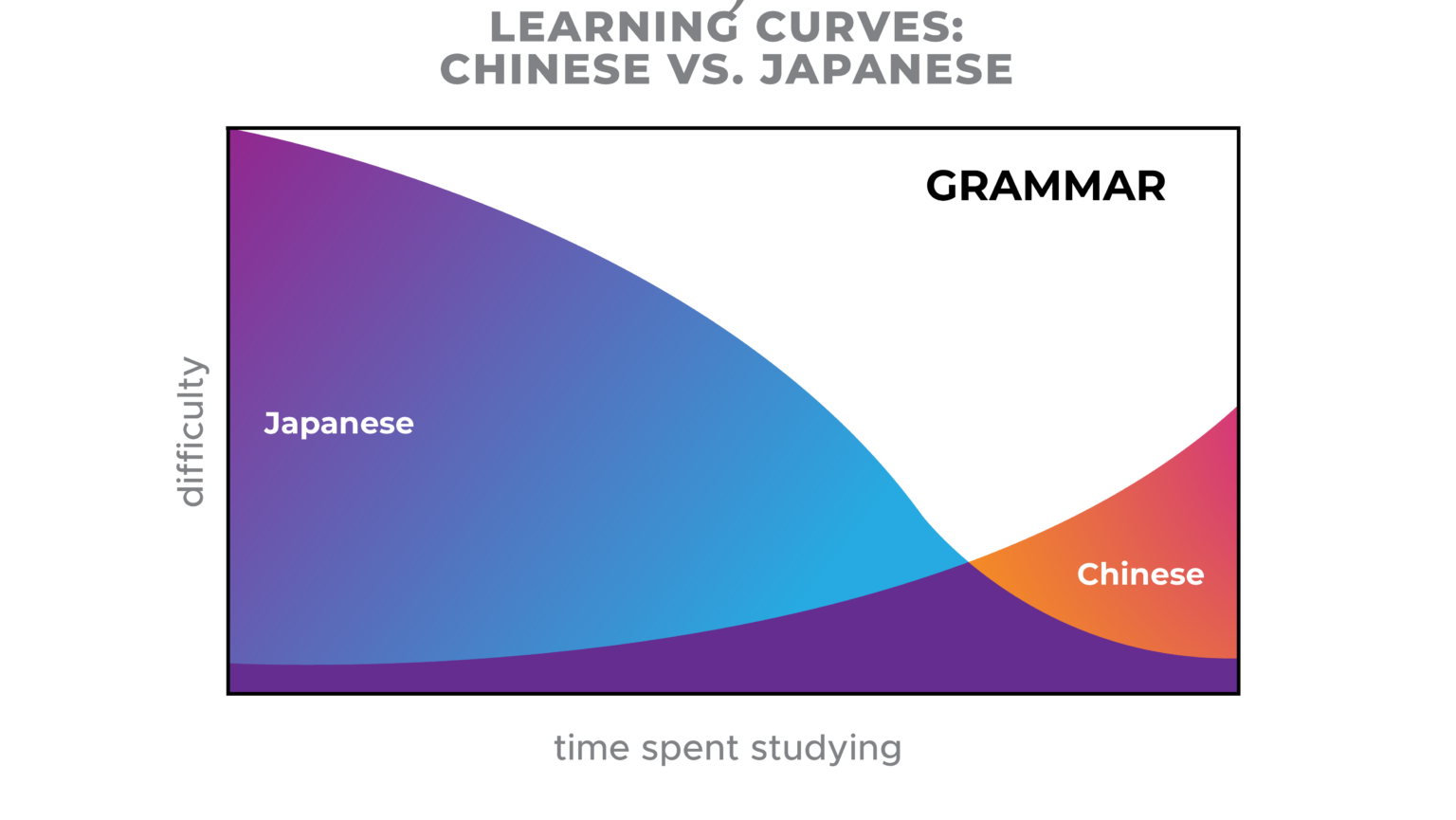
For grammar, Chinese is far easier initially than Japanese.
Whilst it’s not entirely true, there’s a reason many people say Chinese simply ‘has no grammar’.
👉 Although, as you’ll see in our Chinese Grammar Bank, there certainly are some grammatical structures you’ll have to understand to reach proficiency.
Of course, if you progress to studying classical Chinese or Chinese literature, you’re going to find some serious grammatical challenges. However, the arts aside, grammar rarely poses a challenge to Chinese language learners.
The initial challenges of Chinese, such as the pronunciation and characters, are often enough to put people off learning the language all together. However, once these difficulties are overcome, it’s smooth sailing!
Moral of the story? As long as you persevere with Chinese beyond the ‘scary stage’ you’ll find the language becomes easier and easier.
How Hard is it to Learn Mandarin? || Loan Words
So you might be tempted to learn a European language because the words share a lot of similar vocabulary and you’ll get a head start, right?
You might be surprised to learn that Chinese has several English loan words and vice versa.
You may actually know more Chinese than you realize. Let’s look at some English words that originate from Mandarin:
Typhoon: 台风 táifēng
Tai Chi: 太极 tàijí
Kung fu: 功夫 gōngfu
There’s also a whole lot of Mandarin words that originate from English:
咖啡 (kāfēi): coffee
沙发 (shāfā): sofa
巧克力 (qiǎokèlì): chocolate
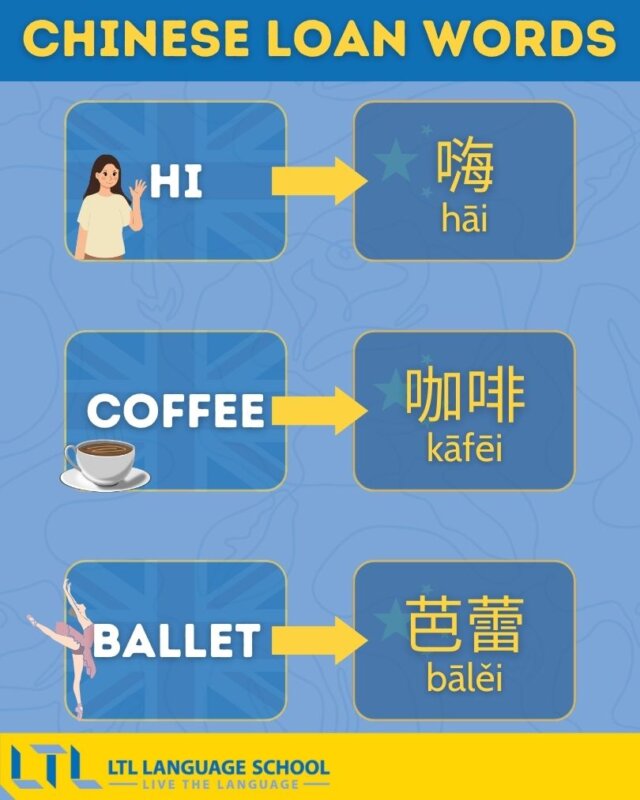
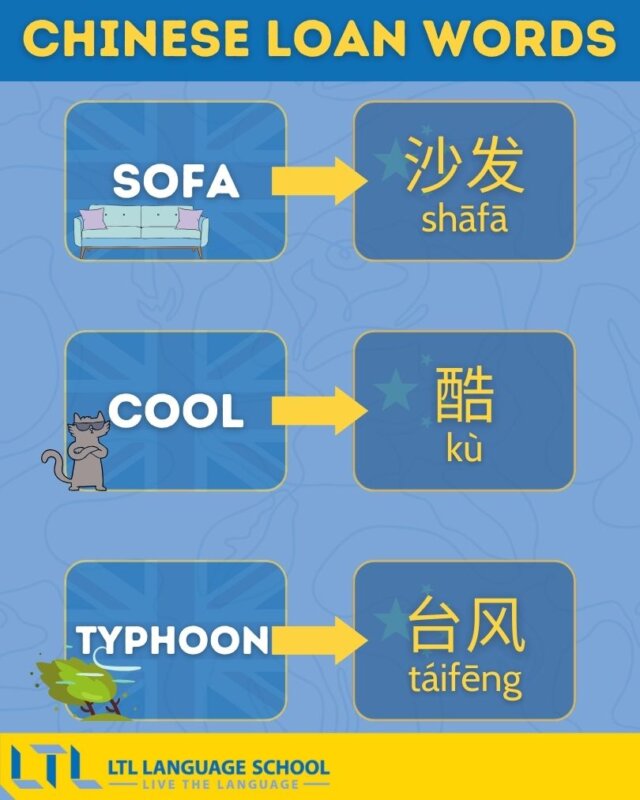
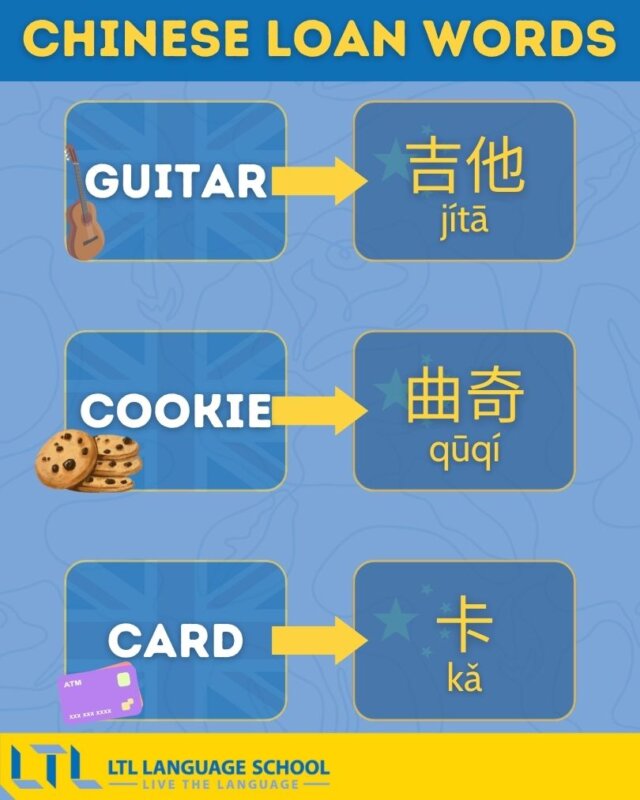
This is particularly noticeable in brand names.
See if you can guess the brand before you reveal the answer!
可口可乐 (Kě kǒu kě lè)
Coca-Cola
阿迪达斯 (Ā dí dá sī)
Adidas
星巴克 (Xīng bā kè)
Starbucks
耐克 (Nài kè)
Nike
麦当劳 (Mài dāng láo)
McDonald’s
How Hard is it to Learn Mandarin? || Fun-Filled Community
Last, but certainly not least, is the language learning experience- and more specifically, the community around you.
The easiest language in the world can seem impossible if your learning environment and methods are uninspiring.
Luckily for Chinese learners, there are lots of fun ways you can get involved in learner communities.
Joining a Chinese language learner discord server or taking online Mandarin classes is a great way to stay motivated and find other learners to share learning tips and support with.
There’s also now more apps than ever that can help you learn Chinese from home, such as DuoLingo, Tandem, Language Reactor and more.
If you’re already in China, joining classes at an LTL school means plenty of social activities and a ready-made Mandarin learning community that will be there to give you advice and encouragement along the way. You might even explore studying in different parts of China, from modern metropolises like Beijing and Shanghai to cultural hubs like Taipei and Xi’an.
So hopefully by now, you’ll see that whilst Mandarin Chinese can indeed (like any language) be challenging, there’s also plenty of reasons that show it’s not so hard after all.
Enthusiasm, good learning materials and perseverance are all you need to succeed!
How Hard is it to Learn Mandarin? || FAQ’s
Is Chinese the hardest language to learn?
Chinese is often considered one of the most challenging languages to learn for English speakers due to its unique features, such as tonal pronunciation and character-based writing system.
However, difficulty is subjective. With consistent practice and a good learning strategy, mastering Chinese is achievable! It also follows a similar subject-verb-object structure to English and you don’t need to worry about gendered nouns or verb conjugation. It also becomes much easier once you’ve mastered the fundamentals.
Do I need to learn Chinese characters to speak Chinese?
While it is possible to learn spoken Chinese without delving deeply into characters (thanks to tools like Pinyin, the romanized form of Chinese), learning characters is highly recommended. Characters are essential for reading and writing, and they also help deepen your understanding of the language, including cultural nuances and word meanings.
Not to mention, it makes navigating things like public transport, restaurants and tourist attractions a LOT easier!
How long does it take to become fluent in Chinese?
The time needed to achieve fluency depends on various factors, such as your study habits, learning environment, and goals. According to the Foreign Service Institute (FSI), it typically takes around 2,200 hours of dedicated study to reach professional working proficiency in Mandarin. Immersive experiences, like studying in China or practicing daily with native speakers, can significantly shorten this timeline.
Can I still learn Chinese effectively online?
Absolutely yes. Although we believe nothing replicates coming to China to learn the language, there is still no doubt learning Chinese online can be done with a solid schedule and motivation to succeed.
You can learn Chinese Online with us 24/7 on our Flexi Classes platform
Can I learn Chinese on YouTube?
Absolutely, YouTube is a wonderful platform to learn Chinese. You could subscribe to a number of channels and try to absorb as much Chinese as you can.
Can I learn Chinese by watching TV?
Yes, watching TV is a brilliant way to learn any language. We have some great recommendations of Chinese Dramas and Chinese Movies you can watch.
Where should I start if I want to learn Mandarin?
The best place to start learning Chinese is with learning pinyin and pronunciation.
To see the fastest progression in your Mandarin ability, there’s no better option than an immersive Chinese program in China!
Want more from LTL?
If you wish to hear more from LTL Mandarin School why not join our mailing list.
We give plenty of handy information on learning Chinese, useful apps to learn the language and everything going on at our LTL schools!
Sign up below and become part of our ever growing community!
⭐ Download our free ebook, your starter pack of essential Mandarin learning resources!


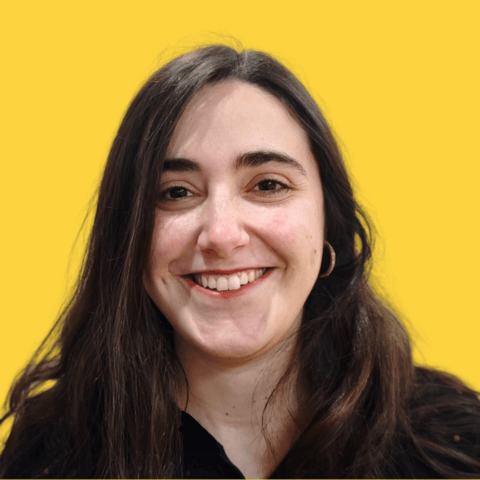 Hi, my name is Ilaria. I am from Italy and I am a Student Advisor at LTL. Fancy coming to study with us in China? Drop me a message.
Hi, my name is Ilaria. I am from Italy and I am a Student Advisor at LTL. Fancy coming to study with us in China? Drop me a message. Hi, my name is Mojca. I am from Slovenia in Europe and I work as a student advisor at our Shanghai school.
Hi, my name is Mojca. I am from Slovenia in Europe and I work as a student advisor at our Shanghai school.










2 comments
Great article! Mandarin can seem intimidating at first, especially with the tones and characters, but I love how you broke it down into manageable aspects.
That's the idea!